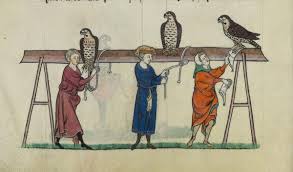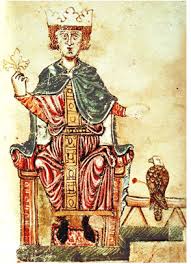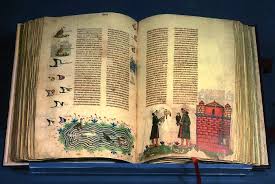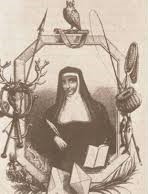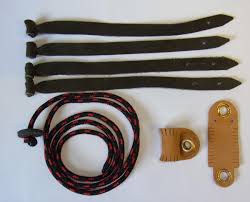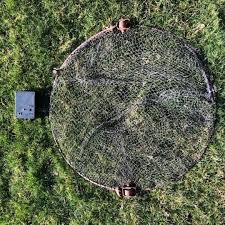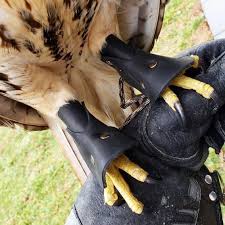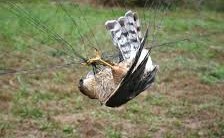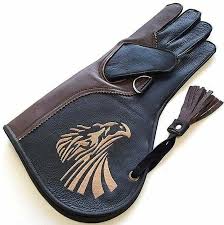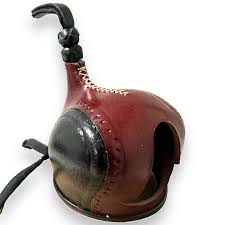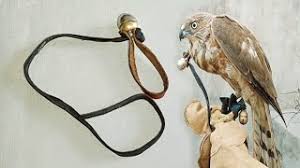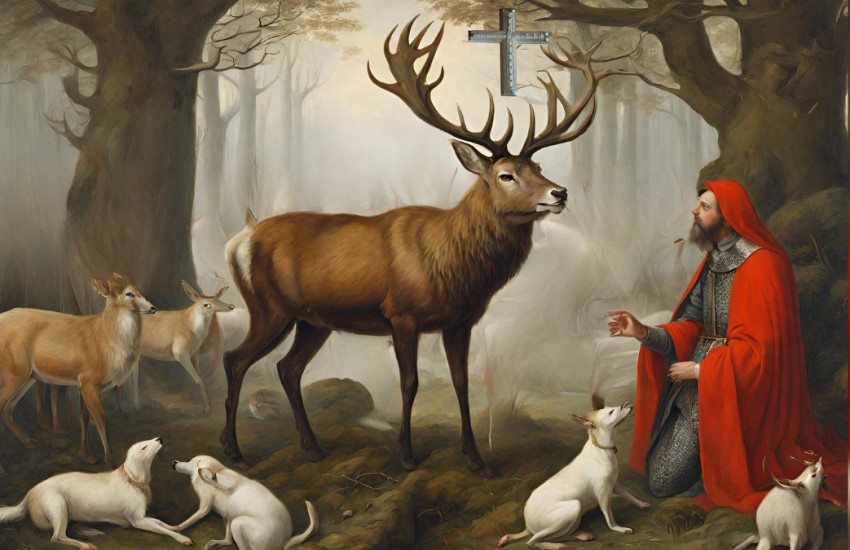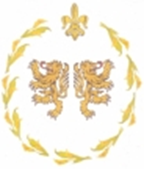Continuing with our advent calendar theme of 2022, we decided to create a set of magazine covers in the likeness of GQ or Men’s Health that capture the medieval essence for men. If such a journal could have existed, what sort of articles would it have contained? Anything and everything to assist a knight or his squire about to set out on a military campaign, crusade or pilgrimage. So please enjoy the snippets below from the June issues of The Rusty Gauntlet.
It must also be mentioned that some articles in these blogs are written as they would have appeared directly in the ‘magazine’, whilst others, due to wanting to be as informative as possible, are written from the present-day point of view. Either way, please enjoy.
Falconry, the hunting of wild animals in their natural state and habitat by means of a trained bird of prey, is thought to have developed in Mesopotamia, with the earliest accounts dating to around 2,000 BC. During the Turkic Period of Central Asia (seventh century AD), concrete figures of falconers on horseback were described on the rocks in Kyrgyz.
Frederick II of Hohenstaufen (1194–1250) is generally acknowledged as the traditional founding father of falconry. He is believed to have obtained firsthand knowledge of Arabic falconry during wars in the region (between June 1228 and June 1229) and obtained a copy of Moamyn’s manual on falconry and had it translated into Latin by Theodore of Antioch. Frederick II made corrections to the translation in 1241, resulting in De Scientia Venandi per Aves. King Frederick II is most recognised for his work De arte venandi cum avibus (The Art of Hunting with Birds) which he wrote toward the end of his life and which is widely accepted as the first comprehensive book of falconry.
The medieval Normans distinguished ‘falconry’ from the sport of ‘hawking’. The Normans practiced falconry whilst on horseback, whereas hawking was conducted on foot. Both falconry and hawking were central to the Norman cultural identity in medieval times, with the sport quickly growing in popularity and spreading across England, Wales and Scotland. Falconry is also an icon of Arabian culture. Saker falcons are the national bird of the United Arab Emirates, Saudi Arabia, Qatar, Oman and Yemen and have been integral to Arab heritage and culture for over 9,000 years. They are the national emblem of many Arabic countries.
The Book of Saint Albans, originally Boke of Seynt Albans, is the common title of a book printed in 1486 that is a compilation of matters relating to the interests of gentlemen in that period. It is also known as The Book of Hawking, Hunting, and Blasing of Arms. This edition credits part of the book to Juliana Berners.
The hawking treatise is considered to be adapted from the Booke of Hawkyng after Prince Edwarde Kyng of Englande, a manuscript of the reign of Edward IV. The work is not intended as a full practical treatise, but to introduce the technical language, and to describe the care of birds of prey, for an owner who wishes to take an interest in falconry.
The work detailed the hierarchy of raptors and the social ranks for which each bird was supposedly appropriate.
EMPEROR – eagle, vulture and merlin
KING – gyrfalcon
PRINCE – gentle falcon: a female peregrine falcon
DUKE – falcon of the loch
EARL – peregrine falcon
BARON – buzzard
KNIGHT – saker falcon
SQUIRE – lanner falcon
LADY – merlin
YOUNG MAN – hobby
YEOMAN – goshawk
POOR MAN – male falcon
PRIEST – sparrowhawk
HOLY WATER CLERK – sparrowhawk
There is an enormous amount of material that references the list above and many experts note the errors, including the inclusion of the ‘vulture’ which is not considered a raptor suitable for falconry.
The following clip provides a great insight into falconry and was produced by Raphael Historic Falconry.
The following is a basic dictionary list of terms used in falconry.
Accipiter – a genus of birds of prey in the family Accipitridae. With 49 recognized species it is the most diverse genus in its family. Most species are called goshawks or sparrowhawks.
Anklets – The leather strap which goes around the bird’s leg. The jesses are attached to this. Sometimes also called a bracelet.
Austringer – A person who flies short-wing or broad-wing hawks, also called a Shortwinger and sometimes (mostly in jest) “dirt hawker”.
Aylmeri – Leather anklets and jesses designed by the late Guy Aylmeri; replacement for traditional jesses.
Bechin – A small tidbit of food.
Bewit – Small strips of leather which attach the bells or other hardware to the bird’s leg. If a different material is used as a bewit, it should not be attached directly to the leg, but rather to the anklet. A cable tie is a great convenience, but must never be attached around the bird’s leg.
Bow Net – A trap that, when set, looks like a circle laying on the ground. When the bird comes in to investigate the bait, the trap is sprung causing the circle to release over the bird creating a semi-circle and a bag of net over the now trapped bird.
Bow Perch – The traditional perch for a hawk.
Bowse – To drink.
Braces – Leather straps on the hood which open and close it.
Brail – A leather thong used to restrain one wing on a bird to prevent it from bating (its wings), especially during manning (training or building a relationship with the bird).
Broadwings – A reference to buteos, parabuteos and eagles (red-tailed hawks, Harris hawks, golden eagles).
Buteo – A genus of medium to fairly large, wide-ranging raptors with a robust body and broad wings.
Button – The folded section of leather that acts as a stopper for the jesses against the anklet, or the braided end of a leash. This may also be called a knurl.
Cadge – A frame serving as a perch used to carry several birds at once.
Casting – The lump of indigestible fur, bone, and other material that a bird casts up. This is usually called a pellet in owls.
Chaps – Leg protectors for a bird, primarily used when hunting squirrels as the squirrel teeth can severely damage a bird’s leg or toe.
Creance – A long line or cord attached to the bird while training. Ten yards is going to work for most situations, but for free flights to verify that your bird is ready to be taken from the creance, many recommend 50 yards in length.
Dho-gazza – A trap consisting of a net suspended between a bird and bait. The bird flies into the net and the net collapses around the bird entangling her. This can be more stressful than some other traps as the bird must be sorted out from the netting.
Falcon – Female peregrine falcon.
Falconer – Flies a falcon (slender, pointy-winged speedsters with steady wing flaps).
Falconer’s knot – A knot used to tether a bird of prey to a perch. Some sources show this knot to be identical to the halter hitch, but with a specific method of single-handed tying needed when the other hand is occupied holding the bird.
Gauntlet – The glove worn by the falconer, traditionally on the left hand.
Hacking – A training method that helps young birds of prey reach their hunting potential by giving them exercise and experience. This technique is used to prepare the falcon to become an independent hunter.
Halsband- The German term for a strap of leather looped around the bird’s neck and then hung down to help propel the bird (mainly Accipiters). Also called a jangoli.
Hawke – Female hawk.
Hood – The leather head covering used on hawks and falcons. The purpose of the hood is to hide the stimulus of the world from the bird’s sight to calm her or prevent her from reacting to things.
Jangoli – A strap of leather looped around the bird’s neck and then hung down to help propel the bird (mainly Accipiters). Also called a halsband.
Jerkin – A male Gyrfalcon.
Jess (plural “jesses”) – is a thin strap, traditionally made from leather, used to tether a raptor. Jesses allow a falconer to keep control of a bird while it is on the glove or in training and allow a bird to be secured on a perch outside its aviary.
Knurl – The leather buttons.
Lanneret – A male Lanner Falcon.
Leash- Traditionally leather, this is what attaches the bird to the perch or falconer’s glove. Modern leashes have taken many forms and many materials are used.
Longwings – a reference to falcons (peregrine falcons, kestrels, gyrfalcons, saker falcons).
Luggaret – A male Luggar Falcon.
Lure – A fake quarry used to train a bird. For training birds to feathered quarry, a feathered lure which looks like a bird is used, sometimes even mimicking the wing beats. For training to rabbits, birds such as Red-Tails are not terribly picky and will respond to almost anything they are trained to.
Mangalah – A cuff used instead of a gauntlet in the Middle East. Sometimes also called a mankalah.
Mew – The bird’s secure enclosure where she lives; the hawk house.
Musket – A male Sparrowhawk.
Owls (family Strigidae) – are not closely related to hawks or falcons and they are not commonly referenced in medieval falconry. However, at least two species have successfully been used, the Eurasian eagle-owl and the great horned owl.
Parabuteo – A genus of bred of prey in the family Accipitridae which includes both the Harris hawk and the white-rumped hawk.
Ring Perch – A perch made out of a circular piece of metal where the hawk stands on top.
Robin – A male Hobby Falcon is called a Robin.
Rufter – A British term for a trapping hood or a hood that’s not polished and precise, but versatile fitting many different birds.
Sakeret – A male Saker falcon.
Screen Perch – A perch made of a vertical wall or screen topped by a bar for the bird to stand on.
Shortwings – A reference to accipiters (Cooper’s hawk, goshawk and sparrow hawks).
St Hubert – The patron saint of falconry and falconers.
Swivel – Small metal joint used in between the leash and the jesses. When these birds are on the perch, they make many small movements turning around and such. Without the swivel they would very quickly become entangled and endanger themselves.
Tiercel – A male raptor, although technically this applies to a male Peregrine Falcon in particular.
Turk’s Head Knot – The knot used at the top of a hood. The primary function is to give the hood a solid handle to manipulate it, but it has also become decorative. Typically two knots are used together or a knot and a bead. More decorative versions include feathers or plumes.
Varvel – A less used piece of equipment. This flat silver or brass ring served several purposes. It was attached at the end of a long slitless jess as the attachment for the leash, but also served as the quick release mechanism when hunting. (A single strip of leather or rope could be attached to the glove, passed through the rings, and held by the falconer. When the falconer cast the bird from the fist the strip would be released allowing it to pass through the varvels and the hawk to be released.) It was usually engraved with the owner’s coat of arms. These have almost all been abandoned as they tend to tangle in brush and grasses.

Catherine A Wilson co-writes with Catherine T Wilson (no relation). Their first book, The Lily and the Lion, was based upon their true-life accidental meeting and resulting friendship. All four books in their ‘Lions and Lilies’ series have won first place prizes in the Chatelaine/Chaucer Awards in the US and in 2019, The Traitor’s Noose won the Grand Prize Chaucer Award.

The Lily and the Lion – 1st Place Chanticleer Chatelaine Award – 2014
The Order of the Lily – 1st Place Chanticleer Chatelaine Award – 2015
The Gilded Crown – 1st Place Chanticleer Chaucer Award – 2016
The Traitor’s Noose – Grand Prize WINNER Chanticleer Chaucer Award – 2017

